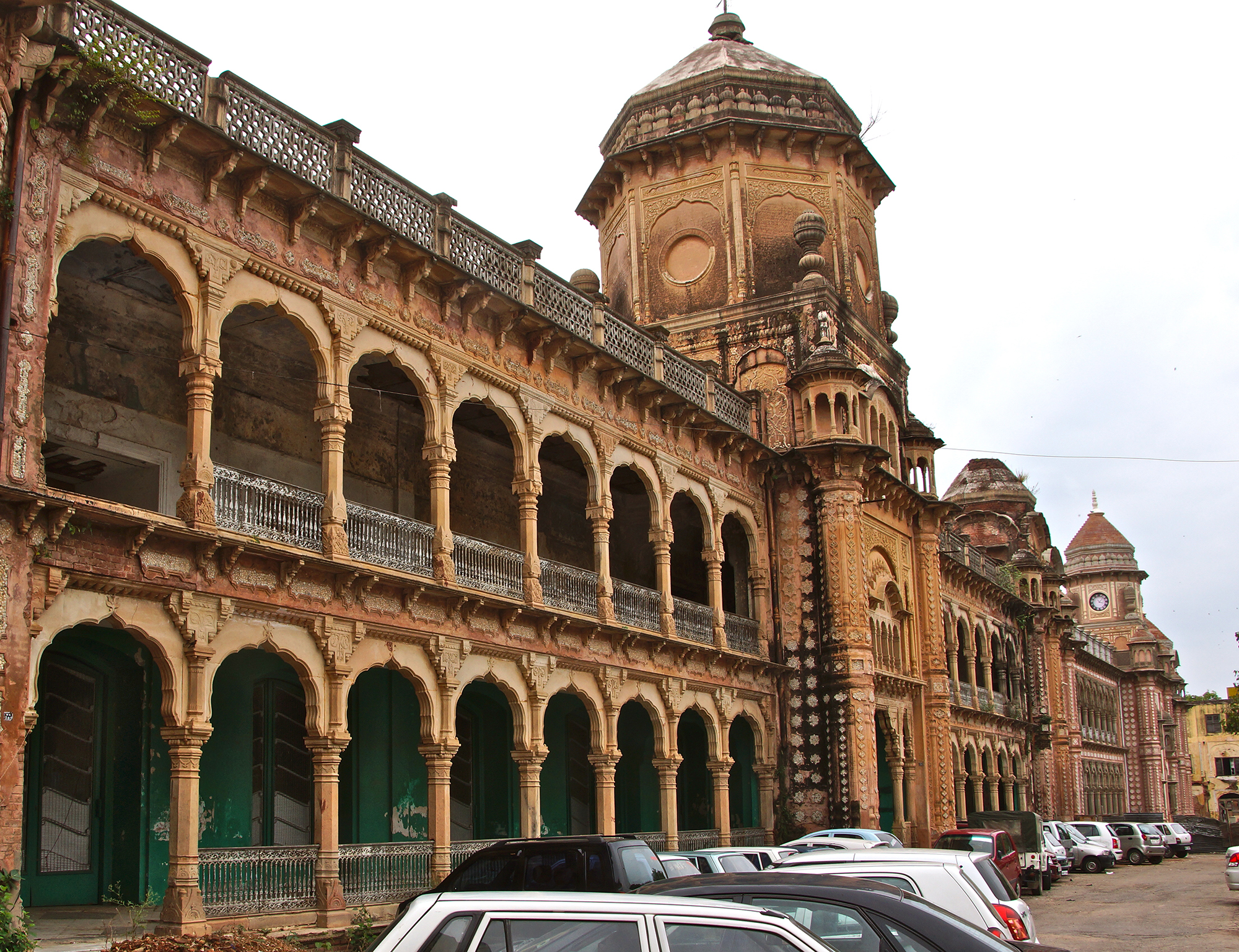Dogri, the second prominent language of J&K State has an important place on the linguistic map of northern India. It belongs to the Indo-Aryan group of Indo-European language family. It has its origin from old Indo-Aryan language i.e. language of Vedas and Laukik Sanskrit. Like other Modern Indo-Aryan languages, Dogri has also passed through Old Indo-Aryan (Sanskrit) and Middle Indo-Aryan (Pali, Prakrit and Apabhramsha) stages of development and entered the Modern Indo-Aryan stage around the 10th century A.D. Hence it shows its three-fold process of development of its sound structure expressing its affinity with Shaurseni Prakrit.
It preserves all the characteristics of all the stages of its growth from Veda’s period to the present form (OIA पुत्र > MIA Putra > D पुत्र “son”, OIA बधिर >MIA बहिरा > D बोला ”deaf”, OIA मुक्तिक > MIA मोतिया > D मोती ”pearl”,OIA दुग्ध > MIA दूध >D दुद्ध “milk”). It has got regular phenomenon of phonetic change which under phonological study has been termed as :
Palatalization:
OIA u`R; / nrtj\/ > D ukp /nac/ “Dance”
OIA fon~;qr /vdjut/ > D fcTt /bïï\/ “Lightening”
Cerebralization:
OIA fryd / tl\k /> D fVDdk /tkka/ “An ornamental or religious mark on the fore head”
OIA =lj /tr\s\r/ >D VLlj /ÿ\ss\r/ “Silk”
Nasalization:
OIAeqnzk /mudra /> D eqanjk /m¬ndra~/ “Coin”
OIAckgq / bah¬ / > Dckag~ /ba~ Õ/ “Arm”
Metathesis:
OIAd`ik /krpa/ > D fdjik /kr\pa/ “Kindness”
OIAtkrd /ïat\k/ > Dtkxr /ïaý\t/“boy”
Voiceless>Voiced
OIAi¥~p /p\µc\/ > Diat /p\µï\/ “five”
OIAd.Vd /k\øt\k/ > D daMk / k\øëa/ “thorn”
OIAp¥~pq /c\µc¬ /> Dpqa> /c¬Õµï\/ “beak”
Un-aspirated >aspirated
OIA iqLrd /p¬st\k/ > DiksFkh /potúi/ “book”
OIA vLr /\st\/ > D vV~B /\ÿÿú\/ “eight”
OIAyks= /lotr\/ > D yksFk / lotú/ “dead body: etc.
As northern India has been a theater of political turmoil, turbulence and upheavals which left their deep imprints on its social and linguistic developments, hence the impact of the foreign languages like Persian and English can be observed on its vocabulary; but the grammatical structure of Dogri is not influenced at all. The salient linguistic features of Dogri language are: (1) besides ten vowel phonemes and twenty eight consonant distinctions five supra segmental phonemes (Length, Stress, Nasalization, Tone and Juncture), phonetically ‘ï’, ‘b’, and ‘r’ based language; initial ‘j’ and ‘ù’ sounds of other languages are pronounced ‘ï’ and ‘b’ respectively. Apart from retention of OIA ‘r’ the insertion of ‘r’ is also one of its peculiarities (foyki /vlap/ >cjyki /b\r\lap/ “lamentation” etc.), (3) ‘\’ followed by nasal sound of OIA becomes ‘«’ (df.Bdk/k\øÿúka/ >dSaBh /k«øÿúi/ “Necklace” etc.), (4) full series of five nasal phonemes ( ÷, µ , ø ,n and m ),barring retroflex nasal, four nasal occur initially also, (5) three tone phonemes (level, high-falling and low-rising), (6) five voiced aspirated stops (ýh ïh, ëh, dh and bh) and voiced aspirated retroflex flapped consonant (rh+) are absent from the phonemic structure of Dogri, (7) passive and impersonal voices are prominent ( fy[ksvk /lkúea/ “wrote” >y[kksvk / l\kúoa/ “got written”) etc.
The Dogri is spoken in mountainous and sub-mountainous regions and the adjoining plains of North West India lying between Pirpanjal and Dhauladhar ranges in North and plains of Punjab in South, river Sutlej in the East and Manawar Tawi in the West, the region known as ë¬ýý\r. The word ë¬ýý\r is taken as derivative of the words ‘dùý\rt\, ‘ëu÷ý\r’, ‘d¬rý\r’ etc. but in view of law of phonetic change ‘d¬rý\r’ has been taken as the most appropriate and scientific source of this word under the influence of regressive assimilation ‘d¬rý\r’ became ‘ë¬ýý\r’ (name of particular region), which is “a region of difficult traverse”, “invincible”, “difficult to be subdued” etc. The earlier mention of “d¬rý\r” occurs in Chamba Copper Plates of 11th Century A.D. and it refers to the community inhabiting the region between Ravi and Chenab.
The earliest reference of Dogri (ë¬ýý\r) is found in Nuh-Siphir, a Masnavi written by Amir Khusaro in A.D. 1317 (“Sindhi O Lahori O Doggar”). Here ë¬ýý\r refers to the language of ë¬ýý\r (the country between Lahore and Kashmir). Elliot has clarified this in the Book Elliot’s History of India; P.P.563-564. In 1816 A.D. R.V. Carey has also included Dogri in the list of Indian languages for getting the missionary material translated into these languages. Later in 1867, John Beam, the founder of modern Indo Aryan Linguistics and author of “Outline of Indian Philology” acknowledged Dogri into the list of eleven languages of Aryan branch of Indo Aryan Linguistic family. In 1916, Sir George Grierson (Linguistic Survey of India, Vol. IX, Part-I) made a mention of Dogri as one of the dialects of Punjabi, perhaps on the basis of inaccurate data. After this, some more linguists like Gill and Gleasson, Ujjal Singh Bahri etc. followed Grierson’s opinion regarding Dogri. Later, Dr. Siddheshwar Verma, a renowned scholar of Indian Linguistics, in his paper entitled “The place of Dogri in the languages of India” described Dogri as an independent dialect and not a dialect of any other language. He has declared it as a frontier language. He writes “of the seven families (such as Indo-Aryan, Dravidian, Iranian, Tibeto-Burman, etc.) of languages in the India, the Dogri language occupies an important place philologically, for it is a frontier language and, in a way, could be classed among the frontier languages of India” (Nami Chetna, July 1953). He also has described characteristics and peculiarities of Dogri in respect of independent frontier languages. Archarya Kishori Das Vajpeyi, a famous Grammarian and Linguist has also proved Dr. Verma’s views in this article entitled “Dogri Bhasha Ki Ek Jhalak” (a glimpse of Dogri language). In his own words “Duggar region had its own prakrit (middle Indo-Aryan language), developed form of which is known as today’s Dogri”.
B. Linguistic Classification:
Genetically ,Dogri belongs to the Indo-Aryan group of Indo-European language family and typologically it is an isolative(analytic inflectional) language.
Arial: Mainly, Dogri is spoken in jammu province of J&k State and adjoining areas of Panjab, Himachal Pradesh and cross the border in Sialkot & ShakarGhar tehsils presently in Pakistan. This Dogri speaking region is consisted of these three main terrains (1)k\øëi(the sandy, stony, waterless and hard of soil area of Districts Jammu, Kathua and Udhampur of Jammu Province of J&K State), (2) pahari (mountainous region of District Kathua of J&K, Chamba and Kangra of Himachal Pradesh) and (3) Plain-cum-reverine (includes southern regions of Jammu and northern parts of Districts Gurdaspur and Hoshiarpur of Punjab and Sialkot and Shakargarh regions of Pakistan).These regions differ in speech from each other in pronunciation, as the inhabitants of Pahari terrain are habitual of using syncopated grammatical forms whereas inhabitants of Kandi and plain terrains possess their own characteristics. However George Grierson has recorded dialects, namely Dogri, Kandyali, Mandyali, Chambeali, Kulhuri, Bhaderwahi, Gujari, Rampuri, Pongali, Hoshiarpuri-Pahadi and Lahanda) spoken in the region of Dogri. 60 lac people inhabiting in these three terrains speak Dogri, but according to the census of India-2000, the number of Dogri speakers is not available yet.
Script /scripts used for documentation of Dogri :
Dogri has its own script namely, ëoý\ra \kkú\r or ëoý\re (p\rane ëoý\re and n\me~ ëoý\re based on ÿak\ri or ÿ«k\ri scripts). Dogri written in this script was official language of J&K State during the reign of Maharaja Ranbir Singh (1857-1885 A.D.). But now the younger generation has adopted naý\ri script for Dogri, as such, almost all the modern literature has been and is being written in deùnaý\ri.
The earliest forays in the field of Dogri linguistic studies made by the European scholars: Frederic Drew and George Grierson. Frederic Drew, in an appendix to his work, The Jammu and Kashmir Territories (London, 1875), presents a brief structure of Dogri grammar. Though this study is mostly of grammatical nature, yet it is a useful contribution to Dogri morphology.
Grierson, in The Linguistic Survey of India, (Vol.IX, PartI, 1916), has presented a sketch of Dogri grammar on the basis of some specimens got translated into Dogri. The study contains a glimpse of Dogri grammatical as well as inflection-categories in the light of declension of nouns, pronouns, adjective, etc. Conjugation of auxiliary as well as substantive verbs is also described. The authenticity of the data on which Grierson’s study is based is, however, doubled.
The first study on Dogri language and linguistics by a native speaker appeared in 1931, when ‘A short account of Dogri dialect’ by Gauri Shanker was published in Indian Linguistics a Vol. (1931-1935). It contains a description of Dogri phonetic observations with vocabulary (27 pages) as well as four pages of connected text in phonetic transcriptions. The main object of this monograph is to note linguistic phenomena in which Dogri differs from Punjabi. The other contribution of Gauri Shanker in this field is his monograph entitled Dogras: Their Language and Literature (1980). In this study the author has presented a brief introduction of Dogri language, Dogra community and Dogri literature.
Siddheshwar Verma was the first linguist, however, who declared Dogri as an independent frontier language of north India. In a text given to justify his opinion, he has discussed philological characteristics of Dogri on the basis of which Dogri can be differentiated from Punjabi. He says, “Being a member of the Indo-Aryan family, Dogri has assumed very peculiar and complicated characteristics, some of Pahari, some of Punjabi, and some of its own.”* Dogri is also included in his work entitled Indian Dialects in Phonetic Transcription.** His paper on ‘Some Problems of Dogri Semantic’ describes three major problems in this field***.
In 1965 Dogri Bhasha aur Vyakaran (Dogri language & Grammar) by Bansilal Gupta was published by J&K Academy of Art, Culture & Languages. This book deals basically with the grammatical structure of the language and also a description of Dogri sounds in brief. A more detailed description of Dogri phonetics has been given by Ujjal Singh Bahri in his paper ‘Phonology of Dogri’ published in Pakha Sanjam Dec.1967. It contains articulatory, auditory as well as phonological description of Dogri sounds. But it has its shortcomings. Bahri has established 26 consonant phonemes; he has not expressed the phonemic value of palatal nasal consonant and retroflex nasal consonant. While both these have their phonemic status in the language. A notable contribution in the field of Dogri phonetics and phonology has been made by Ved Kumari Ghai. Besides, some of her papers, her detailed monograph Contribution to Dogri Phonetics and Phonology (1982 presents problems of Dogri phonetics and phonology more thoroughly. The subjects treated in more details are the system of oral vowels, the problems of quantity and stress, consonant germination and consonant weakening.
In the field of comparative linguistics, Dogri has been studied in comparison with Sanskrit, Hindi, Punjabi etc. Out of the Hindi-Dogri Suffixes (1974), a Ph.D. work in Hindi by Om Prakash Gupta has been published. It presents comparative study of Dogri and Hindi derivational suffixes, grammatical suffixes, post-position and participles.











fail to understand the phonetic words and symbols used after palatalziation, cerebralization, etc.,…to me it’s creating distraction and confusion..
moreover can not find even a single mention of takri or lindae..
is it for scholars only ?